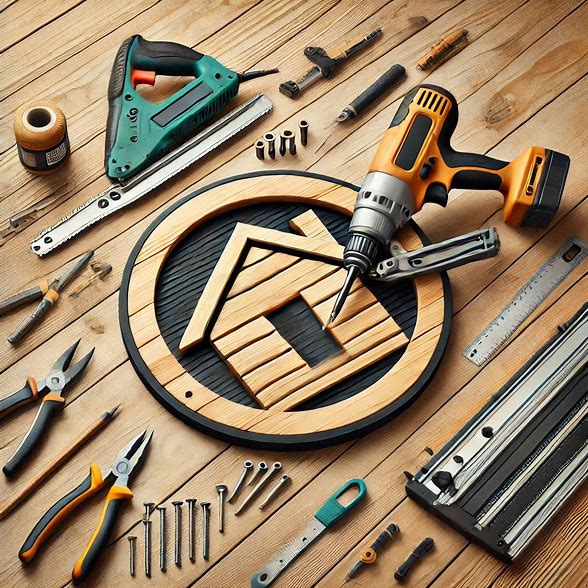Imagine unlocking the secret to impeccable craftsmanship with just one woodworking technique. Dovetail joints, famous for their resilience and exquisite interlocking design, are the hallmark of quality joinery. From timeworn antique furniture to modern, bespoke pieces, these joints speak volumes about the skill and dedication poured into each creation.
Whether you’re aiming to elevate your woodworking projects to professional standards or simply enjoy crafting in your spare time, mastering the dovetail joint is your ticket to success. They not only enhance the aesthetic appeal but also promise enduring durability across generations.
In this guide, we will unravel the mysteries of creating perfect dovetail joints, step by step. We’ll explore essential tools, techniques, and tips that cater to beginners and seasoned woodworkers alike. Get ready to dive into the world of precision, where patience and practice forge seamless connections between pieces of wood, creating something truly extraordinary.
Understanding the Basics of Dovetail Joints
Before you dive into crafting your first dovetail joint, it’s crucial to grasp what makes these joints so special. At their core, dovetail joints consist of interlocking “tails” and “pins” that fit together like pieces of a puzzle, forming a robust joint without the need for mechanical fasteners.
There are several types of dovetail joints, each with its own application and aesthetic. The most common is the through dovetail, renowned for its visible interlocking pattern on both sides, often used in boxes and carcass construction. Then there’s the half-blind dovetail, which cleverly conceals one side of the joint and is typically found in drawer fronts.
Understanding the grain direction and wood species you’re working with is also vital. Different woods react in unique ways to cutting and fitting these intricate parts, so choose wisely based on the purpose and style of your project.
Finally, familiarize yourself with the tools of the trade. A sharp dovetail saw, chisels, and marking tools are your basic staples, ensuring clean cuts and precise fits. Mastering these fundamentals is the first step in crafting durable, graceful dovetail joints that stand the test of time.

Tools and Materials Required for Crafting Dovetail Joints
Crafting a perfect dovetail joint begins with gathering the right tools and materials, setting the foundation for precision and craftsmanship. Let’s dive into the essentials you’ll need before starting your project.
Essential Tools
First on your list is a dovetail saw. Known for its thin blade and fine teeth, this saw is excellent for making precise cuts that define the dovetail’s shape. Pair this with a set of sharp chisels to clean up and refine your cuts, ensuring the tails and pins fit snugly.
A marking gauge and dovetail marker ensure accuracy when laying out your joints. These tools let you transfer precise measurements onto your wood, providing the blueprint your saw and chisels will follow.
Materials to Consider
The choice of wood is another critical factor. Opt for a hardwood like oak or maple for durability, especially if your project demands strength. If aesthetics are more of a focus, walnut offers rich tones that highlight the dovetail’s intricate design.
Finally, make sure to have some quality woodworking glue on hand. While dovetail joints are incredibly strong on their own, a bit of glue can help secure the fit and ensure longevity. With these tools and materials, you’ll be well-equipped to bring your dovetail visions to life.
Step-by-Step Guide to Creating Perfect Dovetail Joints
Embarking on your dovetail journey requires patience and precision. Here’s a streamlined process to help you craft the perfect joint, step by step.
Planning and Marking
Begin by deciding the layout of your dovetail joint, considering the number of tails and their spacing. Use your marking gauge to score lines that define the tail and pin boundaries. A dovetail marker will help you outline the angles, ensuring each piece fits together seamlessly.
Cut the Tails First
With your dovetail saw, carefully cut along the marked lines of the tails. Hold the saw steady, applying gentle pressure to maintain a straight cut. Once you’ve sawed down to the baseline, use chisels to remove the waste from between the tails, achieving a clean and precise finish.
Shaping the Pins
Next, position the tail board above the pin board and transfer the tail layout onto it. This ensures perfect alignment. Saw along these lines to define the pins, then chisel away the waste. Take your time to ensure a precise fit, checking that everything snugly aligns without gaps.
Fitting and Final Touches
Dry fit the joints to test the connection. If needed, make slight adjustments with your chisel, smoothing any tight spots. Once satisfied, assemble the joint with a touch of glue, clamp it securely, and let it cure. Celebrate your success with perfectly interlocked dovetails that are both functional and beautiful!
Common Mistakes to Avoid When Working with Dovetail Joints
Even seasoned woodworkers can slip up when crafting dovetail joints. Being aware of common pitfalls can help you sidestep frustrations and achieve a flawless finish.
One frequent mistake is neglecting proper measurement and marking. Rushing this crucial step can throw your entire dovetail pattern off, resulting in misaligned pins and tails. Take your time with precise marks to set a solid foundation for your cuts.
Another common error is applying excessive force when sawing or chiseling. Heavy-handed techniques can lead to splintering, which not only affects the joint’s appearance but its structural integrity as well. Employ a light touch to maintain control and ensure smooth edges.
It’s also essential to double-check the angles of your cuts. Misjudging these can create gaps or overly tight fits, making assembly a struggle. Test fitting components before applying glue gives you a chance to make adjustments without pressure.
Finally, remember that practice makes perfect. Don’t be discouraged by initial setbacks. Each piece you work on enhances your skills, bringing you closer to that perfectly crafted dovetail joint. Stay patient, and let your craftsmanship naturally evolve with each project.
The Bottom Line: Mastering the Art of Dovetail Joints
Mastering dovetail joints is not just a pursuit for skilled woodworkers; it’s an art form accessible to anyone willing to invest the time and care required. With practice, patience, and attention to detail, you can transform a simple piece of wood into a masterpiece of craftsmanship that embodies strength and timeless beauty.
By understanding the basics, equipping yourself with the right tools, and following a methodical process, you set the stage for success. Avoiding common mistakes and refining your technique through hands-on experience will boost your confidence and skill set.
Each dovetail joint you create tells a story of perseverance and precision. As you progress, you’ll not only appreciate the technical aspects but also the artistic expression in every cut and fit.
Ultimately, the journey to mastering dovetail joints is rewarding far beyond the finished product. It fosters a deeper connection with your materials and tools while sharpening your overall woodworking abilities. Whether you’re crafting a cherished family heirloom or a functional piece of furniture, the satisfaction comes in knowing that your dedication and craftsmanship will endure through the years.
Remember, every expert was once a beginner. Embrace the challenges, celebrate small victories, and keep honing your craft. In the realm of woodworking, the dovetail joint stands as a testament to your growth and commitment to excellence.

